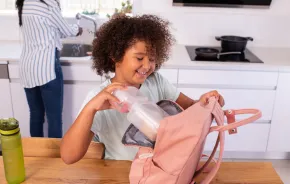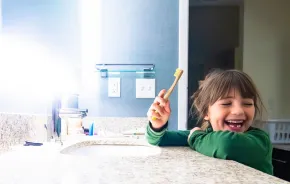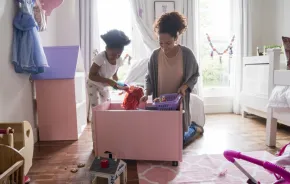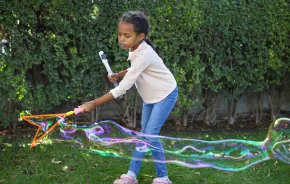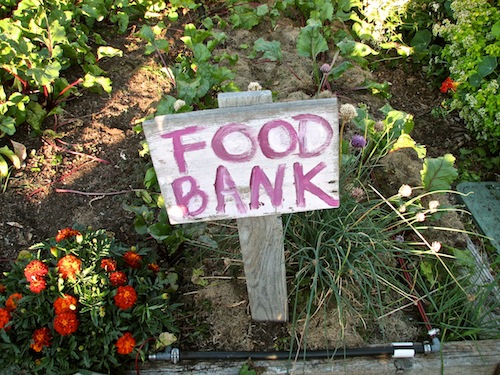 As a school-age kid, too young to understand what food stamps meant, I simply thought they were cool. We got to have choice. Back then, food stamps still came in different paper denominations like money. So when my dad gave me a $5 food stamp to spend with my friend, it meant my sister and I could go to the local market and buy chips, the cool cereal with marshmallows in it, and maybe even the coveted cupcake goodies my sister and I always pined for.
As a school-age kid, too young to understand what food stamps meant, I simply thought they were cool. We got to have choice. Back then, food stamps still came in different paper denominations like money. So when my dad gave me a $5 food stamp to spend with my friend, it meant my sister and I could go to the local market and buy chips, the cool cereal with marshmallows in it, and maybe even the coveted cupcake goodies my sister and I always pined for.
I am lucky that my memories of this hard time for my parents were mostly fun. Today, my kitchen and garden are abundant with food. I am grateful, but I’m also paying it forward. Through my giving garden I’m growing food for others.
A giving garden can be a whole garden, a raised bed or a row or two dedicated to growing healthy, organic food for those in need. One statistic shows that in 2011, 50.1 million Americans lived in food-insecure households and households that had higher rates of food insecurity than the national average included households with children, especially households with children headed by single women or single men.
Beyond its physical definition, a giving garden is a way to get your hands dirty with your little ones, while volunteering your time close to home. If you’re already a gardener, this volunteer opportunity is ideal. Before building my own food bank garden, I could not find hours in the day for volunteering, even though I wanted to give back. With the giving garden I found I could contribute without necessarily impacting my schedule. Instead of donating hours at a time, I donate my hand-cultivated food.
Raising vegetables to donate is rewarding for everyone involved. Kids feel empowered when they are given the opportunity to help others. And, giving gardens teach children a valuable life skill: how to grow valuable, life-sustaining food.
 How to get started growing a giving garden
How to get started growing a giving garden
Starting a food-bank donation garden is easier than you think. First, you need a little space. If you have multiple raised beds in an existing garden, you could dedicate an entire bed or part of a raised bed for your food bank contributions. Alternatively, you could choose to dedicate a single row or one container on your balcony to be your giving garden.
Next, find out where you can donate and what foods the food bank will accept. Before you start growing a ton of unique heirloom vegetables for your donations, do a little research first to find out what the food banks really need. In Seattle, Solid Ground's Lettuce Link helps connect people with donation sites, making it easy for willing gardeners to make a homegrown-produce contribution. They make it simple for giving gardeners by providing an e-spread sheet with donation sites organized by neighborhoods, which also lists available donation times and the vegetables each site prefers.
However, if you don’t live in a city with an organization already dedicated to the cause, a quick call to your local food bank could get you started. You’ll want to ask if they will accept local produce, what fruits and vegetables they’d prefer and good times to drop off donations. If one food bank won’t accept personal garden donations, it doesn’t mean they all won’t. Call another! Food banks are unique, run by different organizations with their own protocols. Be persistent – once you find a local donation site, you may continue to donate produce there for years to come!
What to grow for food bank donation
When it comes to purchasing seeds for your giving garden, keep it simple. Make your seed purchases based on your local food bank’s preferences since they know the food bank patrons’ preferences best. I learned quickly from experience that commonly popular vegetables, like lettuce, peas and carrots are the most sought-after ones in my neighborhood (they are also among the easiest veggies to grow with kids). I was lucky that my local donation site was willing to accept the abundance of chard my giving garden produced the first year.
The last and most rewarding step is to donate your harvest. To donate, simply rinse the produce, stick it in a bag and drop it off at your donation site. Some food banks even offer donation receipts that you can use at tax time, so remember to ask.
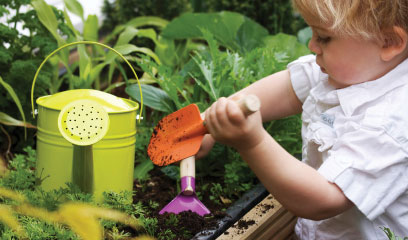 To end hunger and food insecurity: every bit helps
To end hunger and food insecurity: every bit helps
Remember, you don’t have to create an entire garden to contribute. Organizations like the Garden Writers Association encourage their readers to simply plant an extra row. In just one large container or one square foot of garden space, you could grow four lettuce plants, four chard plants, five beets or even nine spinach plants!
There are even opportunities to contribute for those without a garden. In the Seattle area you can apply for garden plot in your local community garden through the P-Patch Community Garden Program. At the Marra Farm Giving Garden, an historic four-acre urban farm in the South Park neighborhood in south Seattle, there is a children’s gardening and nutrition program that strives to connect kids with their food and teach them to grow their own.
Every donation, no matter how small, makes a difference. Mother Teresa said it best, “If you can’t feed a hundred people, then just feed one.” With your family's giving garden, you can do just that.
To learn more about how I gathered resources from the community to transform my front lawn into a giving garden of my own, check out this series of posts. My giving garden inspires me every time I walk out my front door.
See also:
- The five best vegetables to grow with kids
- Edible and incredible: 8 great flowers for your family garden
- Berry delicious: How to start a berry patch
Stacy Brewer, teacher, urban farmer, and self-proclaimed garden nerd, is committed to cooking with local and seasonal ingredients and growing as much food as she can in her modest Seattle yard. She covers gardening, preserving and crafting on her blog, Seattle Seedling. She's also the creator of SeattleUrbanFarmSchool.com








